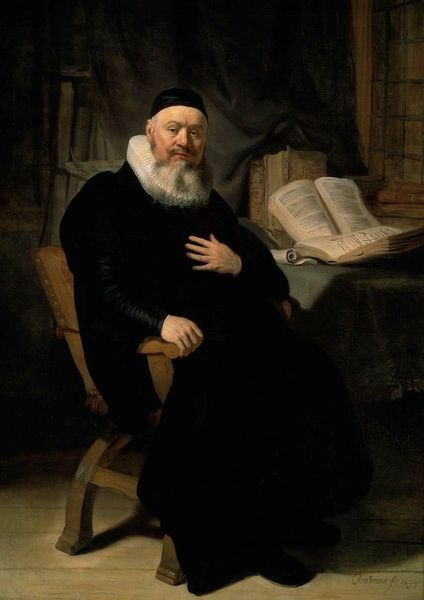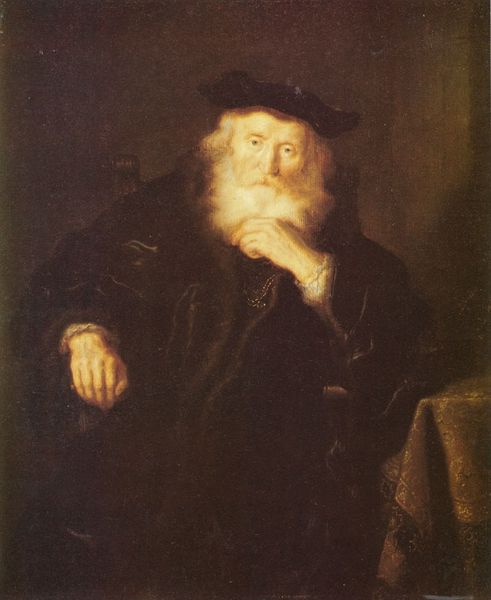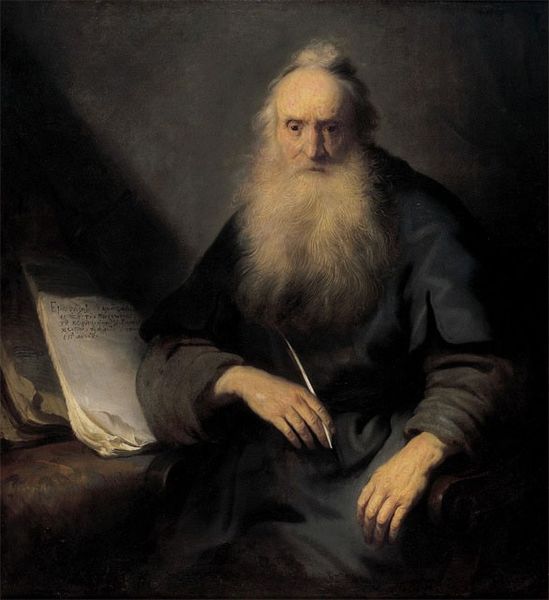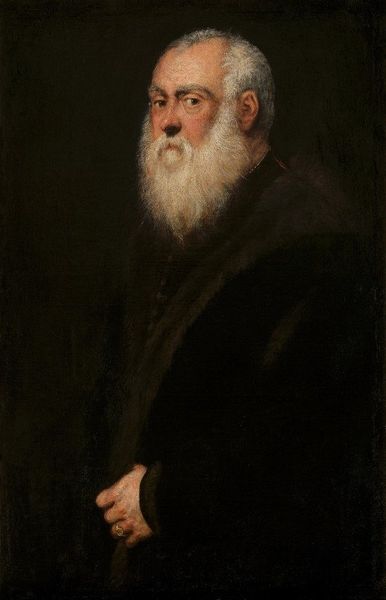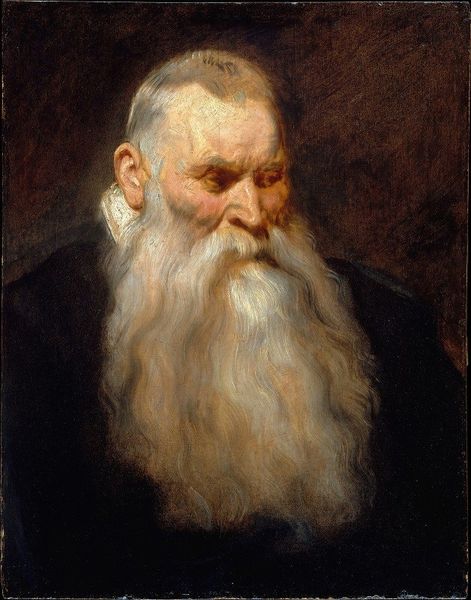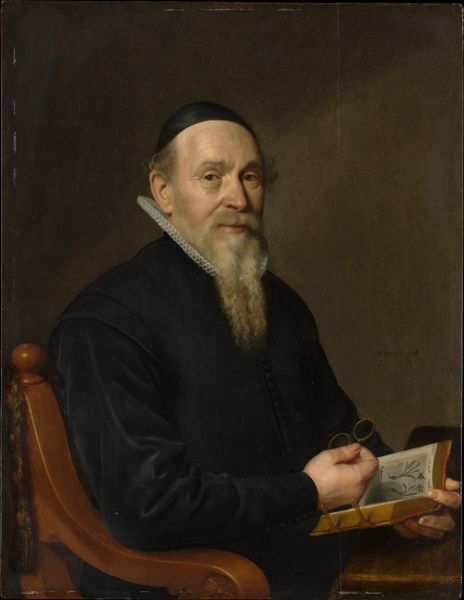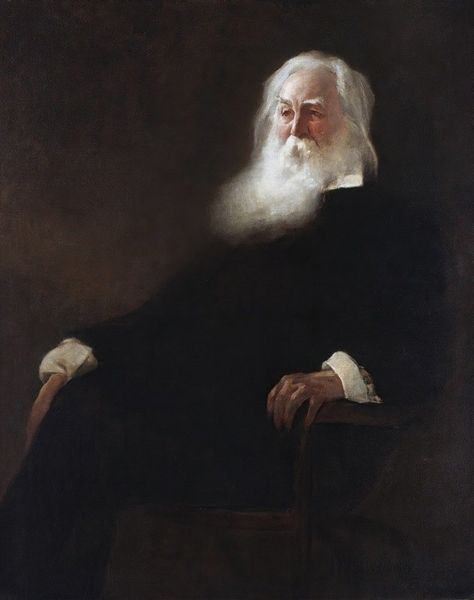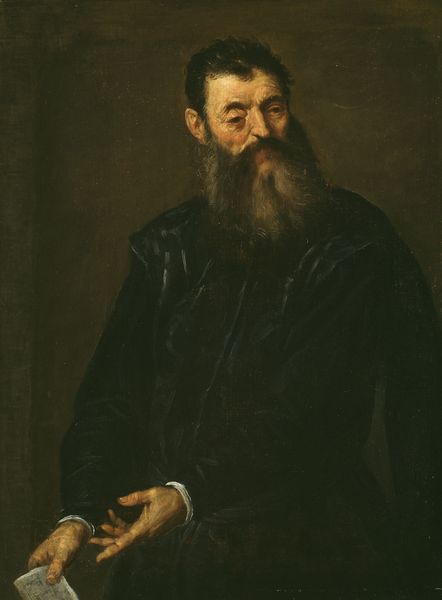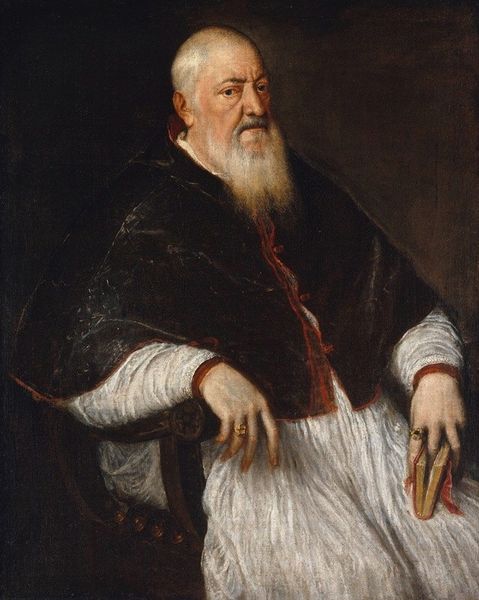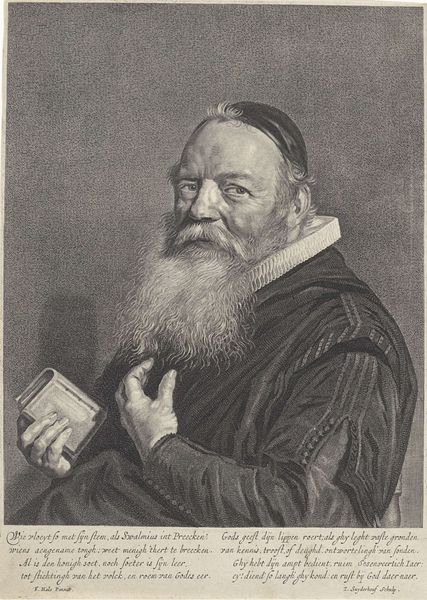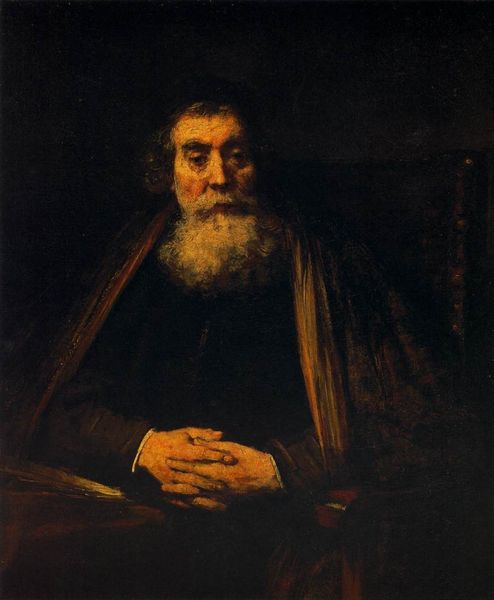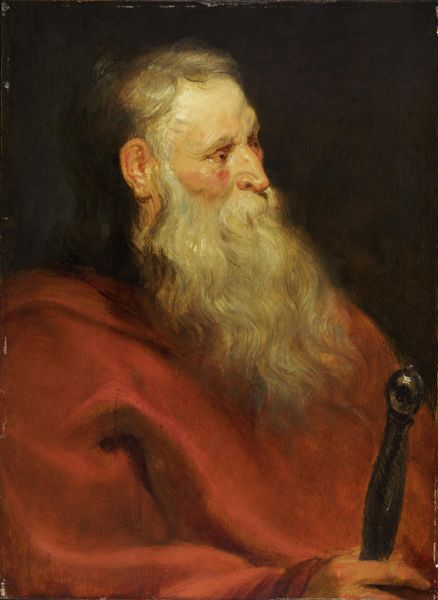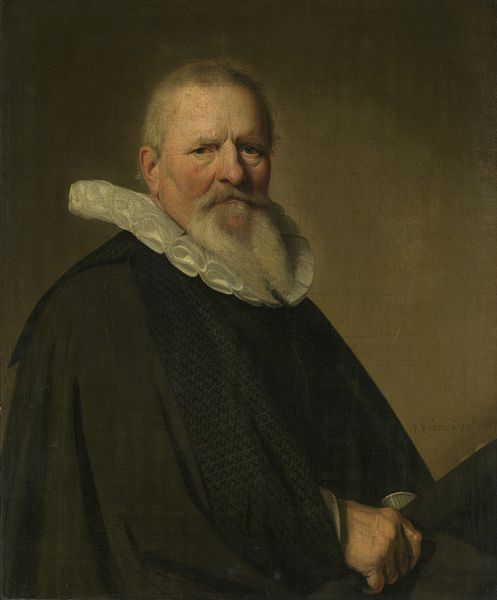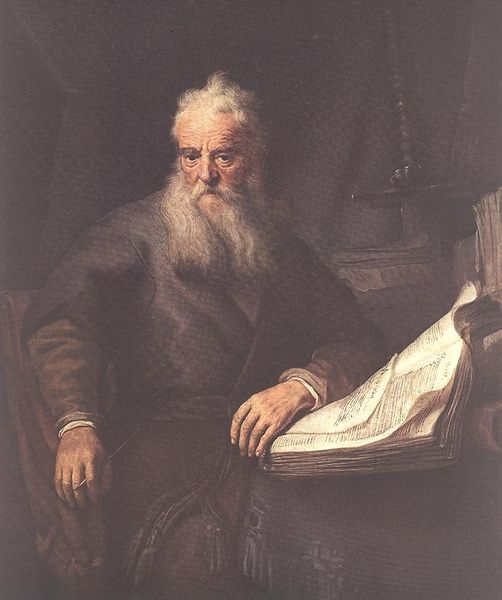
painting, oil-paint
#
portrait
#
figurative
#
baroque
#
dutch-golden-age
#
portrait
#
painting
#
oil-paint
#
figuration
#
history-painting
#
realism
Copyright: Public Domain: Artvee
Rembrandt van Rijn painted this "Portrait of a Clergyman" in the Dutch Golden Age. It's a study in the subtle cues of status and power operating in the religious life of the Netherlands at the time. Consider the sitter’s assured gaze, his costly if somber garments, the very fact of his having the leisure and means to commission such a portrait: all speak to the clergyman’s position within a hierarchy both spiritual and social. In the 17th-century Dutch Republic, the Reformed Church was a central institution. Religious figures wielded considerable influence, and a portrait like this one served to reinforce their authority. Rembrandt, with his keen eye for psychological detail, captures not just the man's likeness, but the weight of the institution he represents. As art historians, we rely on archival records, social histories, and religious studies to fully understand the dynamics at play in this portrait. Each brushstroke, each compositional choice, is a testament to the complex interplay between art, religion, and society.
Comments
No comments
Be the first to comment and join the conversation on the ultimate creative platform.
